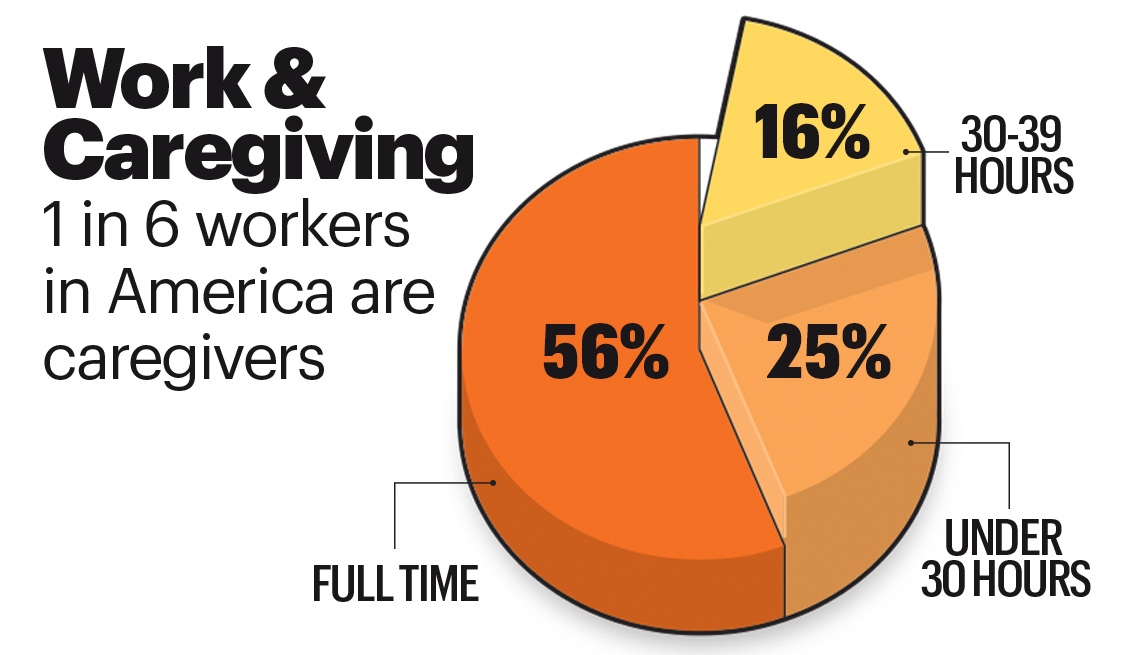
By now, most of you probably have a notion of what being a family caregiver is about. Chances are, you’ve been one, needed one or known one. It can be a deeply rewarding job, but it can also be incredibly demanding.
The 60 percent of family caregivers who also hold full- or part-time jobs bear additional burdens. Just getting through an average day calls for complex choreography, especially when schedules and needs don’t align properly. An urgent medical situation or a transportation glitch can set off a frantic scramble to fill the gaps.

Often, caregivers try to pull off these maneuvers without alerting bosses, for fear of appearing less than fully committed to their jobs.
AARP has done extensive research on caregiving, and we have found that many companies truly want to help their employee-caregivers. These employers know that such benefits are increasingly in demand by job applicants and that they are an important tool for recruiting and retaining top-notch workers.
Many companies are already providing assistance to employees who are struggling to meet those demands. In fact, AARP and the Respect A Caregiver’s Time (ReACT) Coalition recently collected case studies of employers with impressive caregiver policies in place.
- CBS employees receive up to 15 days a year of emergency backup-care services to fill in when normal care arrangements break down.
- Allianz Life provides quarterly educational workshops for employees who are caregivers.
- Emory University uses a 24/7 call center to provide answers to caregiving questions.
- Deloitte gives workers up to 16 weeks of paid time off annually for caregiving.
- Fannie Mae employs an on-site geriatric care consultant whose services are free to employees, with no limits on usage.
I’m proud to say that AARP offers its employees two paid weeks of caregiving leave each year, in addition to the ability to use their sick leave for caregiving. We also have flexible work arrangements and provide backup-care assistance for emergencies.
To help employers get a jump start on creating caregiver-friendly workplaces, AARP and the Northeast Business Group on Health have produced a free online tool kit, chock-full of ideas and examples, expert resources and an assessment tool to gauge how well they’re doing in providing assistance.
Whether employers know it or not, their workers are grappling with finding a balance between their jobs and their caregiving responsibilities.
About 25 percent of all family caregivers are millennials, and 50 percent are under the age of 50. Trying to juggle work and caregiving takes a toll. Let’s do our best to make it easier for all of them.
Share your caregiving story with AARP.
Jo Ann Jenkins is CEO of AARP.



Comments are closed.